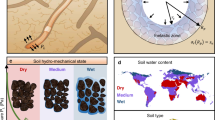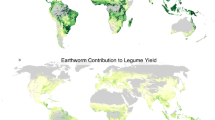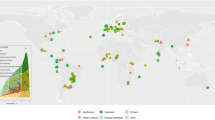Abstract
EARTHWORMS move seeds1,2 and viable seeds have been reported in worm casts3,4. The causes of loss of seeds from the soil are seldom identified5,6.
This is a preview of subscription content, access via your institution
Access options
Subscribe to this journal
Receive 51 print issues and online access
$199.00 per year
only $3.90 per issue
Buy this article
- Purchase on SpringerLink
- Instant access to full article PDF
Prices may be subject to local taxes which are calculated during checkout
Similar content being viewed by others
References
Darwin, C. R., The Formation of Vegetable Mould through the Action of Worms with Observations on their Habits (John Murray, London, 1881).
Gerard, B. M., Soil Organisms (edit. by Doeksen, J., and van der Drift, J.), 55 (North-Holland, 1963).
Chippindale, H. G., and Milton, W. E. J., J. Agric. Sci., 22, 451 (1932).
Milton, W. E. J., J. Ecol., 27, 149 (1939).
Roberts, H. A., Rep. Nat. Veg. Res. Stn 1969 (1970).
Sagar, G. R., Proc. Tenth Brit. Weed Control Conf., 965 (1970).
Author information
Authors and Affiliations
Rights and permissions
About this article
Cite this article
MCRILL, M., SAGAR, G. Earthworms and Seeds. Nature 243, 482 (1973). https://doi.org/10.1038/243482a0
Received:
Revised:
Published:
Issue date:
DOI: https://doi.org/10.1038/243482a0
This article is cited by
-
Seed selection by earthworms: chemical seed properties matter more than morphological traits
Plant and Soil (2017)
-
Invasive earthworms as seed predators of temperate forest plants
Biological Invasions (2016)
-
Resident plant diversity and introduced earthworms have contrasting effects on the success of invasive plants
Biological Invasions (2014)
-
Exotic Ecosystem Engineers Change the Emergence of Plants from the Seed Bank of a Deciduous Forest
Ecosystems (2009)
-
Dispersal of annual plants in hierarchically structured landscapes
Landscape Ecology (1995)



